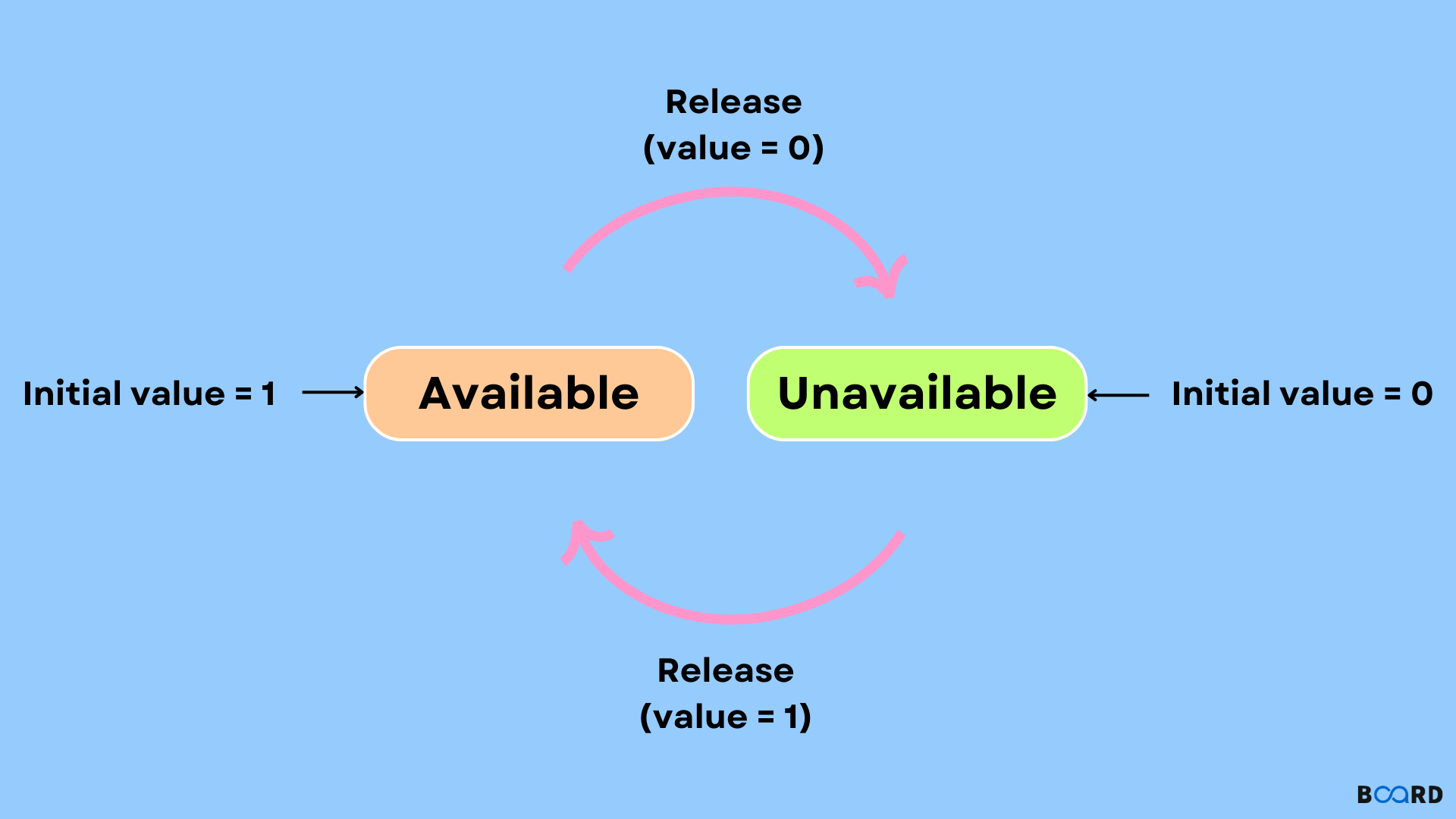Fundamentals of Operating System
Semaphore in the Operating System

Introduction
In this article, we will discuss semaphores in the operating system.
Semaphore was introduced in the year of 1965 by Dijkstra. It is the most convenient way to manage concurrent processes with the help of semaphores which is nothing but simple integer value. A semaphore represents nothing but an integer variable that is shared among threads. Using this variable we can conquer the critical section problem and make process synchronization in the multiprocessing environment.
Types
Semaphores are of two types:
Binary Semaphore
Binary semaphores are special types of semaphores. They are also known as mutex locks. They represent only logical values: 0 and 1. Using binary semaphores we can implement the solution of critical section problems with numerous processes.
Counting Semaphore
The domain of counting semaphores is an unrestricted domain. It is used to control access to a resource that has multiple instances.
Now we will see how semaphores do the operation:
The P and V operations have been explained below:
1. The P operation is also known as wait, sleep or down operation.
2. The V operation is also known as the signal, wake-up, or up operation.
3. The P and V operations both are atomic in nature. The semaphore(s) is assigned as a value equal to one. Here, atomic implies that the variable on which read, modify and update operation occurs at the same time with no pre-emption.
4. The critical section is covered with both operations to implement process synchronization.
Code Implementation
We will now implement binary semaphores:
The description above is for a binary semaphore that can have only two values 0 and 1 and make sure mutual exclusion. The other type of semaphore also exists which is known as counting semaphore. A counting semaphore can take a value greater than one.
Its limitations are the following:
1. Priority inversion is one of the limitations of semaphore.
2. The operating system requires to keep the track of all the calls to wait and to signal the semaphore.
3. A process may try to wake up another process that is present in a non-sleep state. Therefore, deadlock might get collapsed indefinitely.
We will now see how we can implement counting semaphore:
Explanation
Whenever the process waits it is appended to the waiting queue of the process linked with the semaphore. This is achieved by calling the system call block() on the process.
Conclusion
In this article, we discussed semaphores in the operating system. We saw the working of binary as well as counting semaphores. We believe that this article has surely helped you to gain some knowledge.
